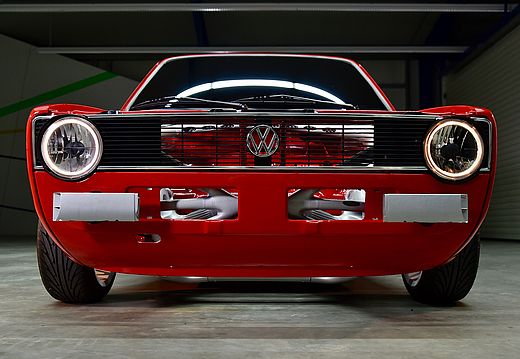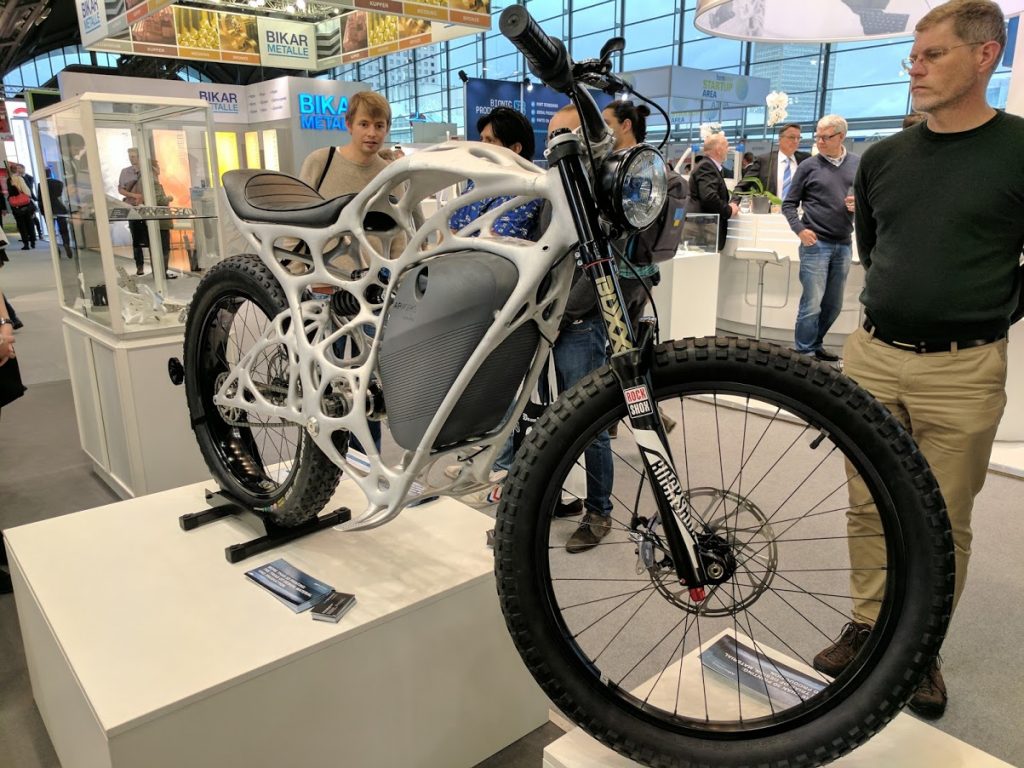Vehicle electrification and efficient manufacturing are two rapidly developing fields within the automotive industry, second perhaps only to AI. 3i-PRINT, a collaboration between product development companies Altair, APWorks, csi entwicklungstechnik, EOS GmbH, GERG, and Heraeus have been using 3D printing technology to innovate and test concepts in these fields.
3i-PRINT is intended to be, “an agile engineering-platform for research and development for rapid implementation of ideas”.
As part of their latest project, they have redeveloped the front end structure of the Volkswagen Caddy van and 3D printed the result, with every constituent member of 3i-PRINT playing a part in the manufacturing process.

Potential of 3D printing in automotive manufacturing
3i-PRINT noted that a distinct advantage lay in 3D printing the front end of the Caddy by “implementing as many technical features as possible with as few components as possible with the resulting added value”.
The company explains that functional integration of such materials to create constituent parts of the front end cannot be normally achieved through traditional manufacturing methods. The advent of electrification will require better heat management, the reduction of design space, and reduction overall weight, all of which can be achieved more efficiently through optimised 3D printed components.
Vehicle safety, performance, and comfort of the existing structure were achieved through the “introduction of load-bearing structures that include details for both active and passive cooling” of the engine and battery through via channelled airflow.
Functions linked to better heat management, passive safety, and fluids storage (such as the fountain solution tank) require the printing of brand new features in addition to the optimising existing structural features.
The process
APWorks, a German subsidiary company of Airbus, has already worked in the aerospace industry to make the part manufacturing supply chain more efficient.
In this automotive project, they took overall responsibility for the additive manufacturing process. APWorks also developed the aluminium Scalmalloy metal powder used for this process, which was in turn supplied by Heraeus. The front end components were printed using this method on an EOS M 400 machine.

3D printing can repurpose the exterior and improve the efficiency of the interior parts of a vehicle, and it also hails a dramatic change in the manufacturing processes. While this prototype is merely a design testbed, and not due for wide-scale production, the collaboration has opened a door to the future of automotive assembly.
Fired up by this? Sign up to our newsletter, and follow us on Twitter for more stories on 3D printing and the automotive industry.
Featured image shows 3i-PRINT’s design prototype on a VW Caddy.


